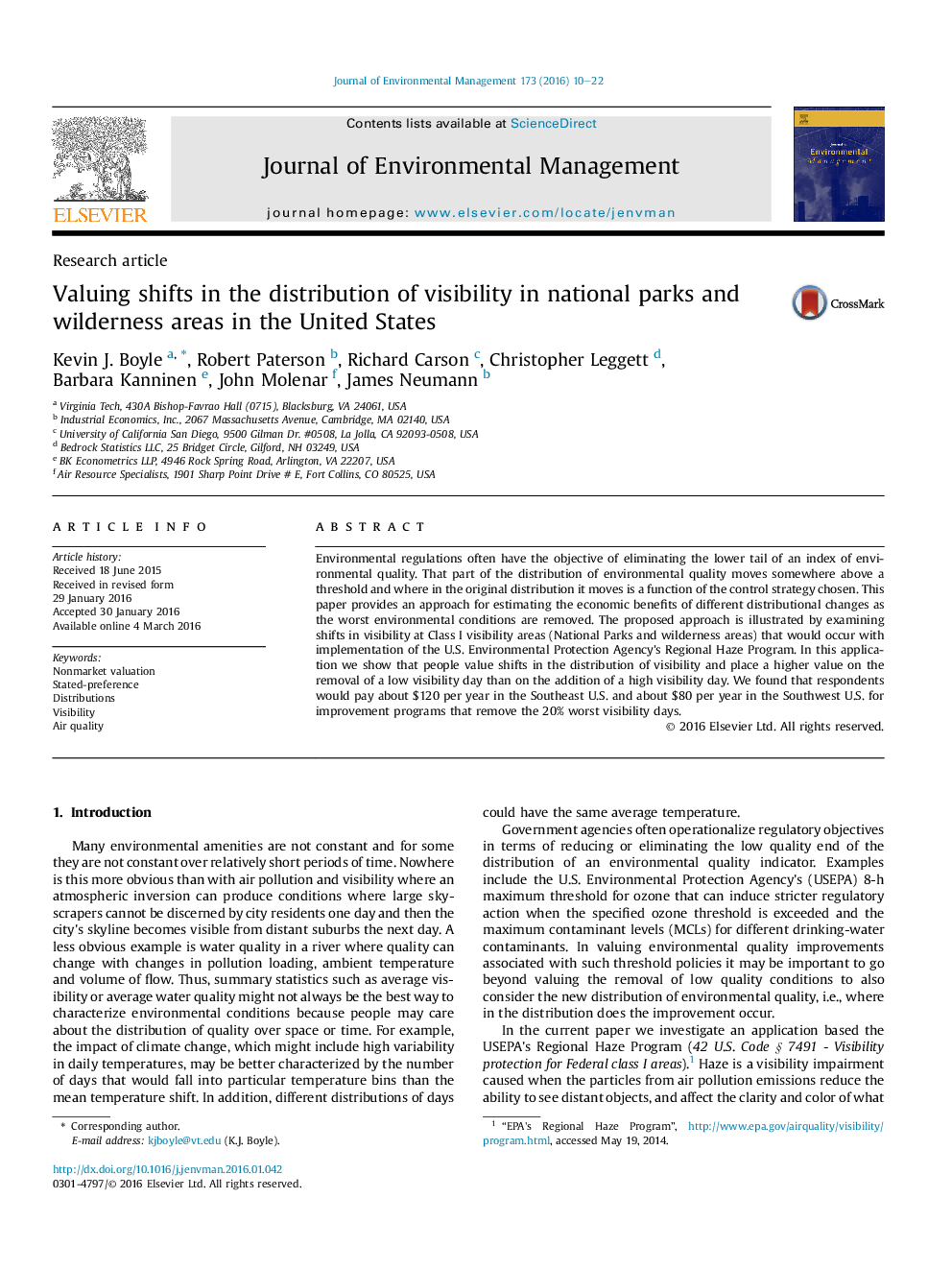| Article ID | Journal | Published Year | Pages | File Type |
|---|---|---|---|---|
| 1055368 | Journal of Environmental Management | 2016 | 13 Pages |
•Increases in best visibility are valued less than decreases in worst visibility.•Human health and ecological effects can overestimate of visibility benefits.•Studies are needed for different regions of the U.S. for policy analyses.
Environmental regulations often have the objective of eliminating the lower tail of an index of environmental quality. That part of the distribution of environmental quality moves somewhere above a threshold and where in the original distribution it moves is a function of the control strategy chosen. This paper provides an approach for estimating the economic benefits of different distributional changes as the worst environmental conditions are removed. The proposed approach is illustrated by examining shifts in visibility at Class I visibility areas (National Parks and wilderness areas) that would occur with implementation of the U.S. Environmental Protection Agency's Regional Haze Program. In this application we show that people value shifts in the distribution of visibility and place a higher value on the removal of a low visibility day than on the addition of a high visibility day. We found that respondents would pay about $120 per year in the Southeast U.S. and about $80 per year in the Southwest U.S. for improvement programs that remove the 20% worst visibility days.
